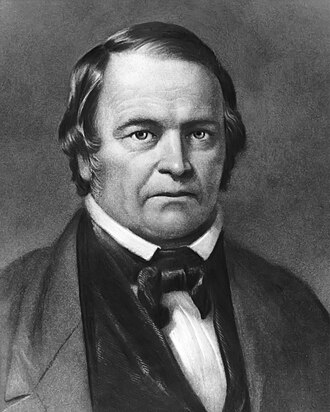Investiture Achievement/Friend/Spiritual Discovery
The Great Disappointment was an event in the early history of certain Christian denominations (churches), when Jesus failed to reappear on the appointed day of October 22, 1844 as some Christians expected.
Between 1831 and 1844, William Miller, a Baptist preacher, launched what he called the "great second advent awakening", also known as the Millerite Movement. Miller preached a set of fourteen rules for the interpretation of the Bible, which spread to followers throughout the world. Based on his study of the prophecy of Daniel 8:14, Miller calculated that Jesus would return to Earth sometime between 21 March 1843 to 21 March 1844. After the latter date came and went, the date was revised and set as October 22, 1844 based on the yearly Day of Atonement in Karaite Judaism.
When Jesus did not appear, Miller's followers experienced what came to be called "the Great Disappointment". Most of the thousands of followers left the movement. A few, however, went back to their Bibles to find why they had been disappointed. Some concluded that the prophecy predicted not that Jesus would return to earth in 1844, but that investigative judgement in heaven would begin in that year.
Miller recorded his personal disappointment in his memoirs: "Were I to live my life over again, with the same evidence that I then had, to be honest with God and man, I should have to do as I have done. I confess my error, and acknowledge my disappointment." (Sears, 1961) Miller continued to wait for the second coming and died in 1849.
Repercussions
Seventh-day Adventists
Seventh-day Adventist Church historians write about the morning of October 22 and refer a supposed vision received by an early Adventist by the name of Hiram Edson. In Edson's vision he saw that the date that Miller had predicted was in fact correct. Later Bible study and visions led to the belief that Christ went into the second apartment of the heavenly sanctuary in 1844 to begin the investigative judgment of both righteous and wicked to see who is ready to go to heaven. (see [1], #24) This investigative judgment takes place prior to his second coming, which they believe to be very soon. A number of issues were raised by Adventist theologian Desmond Ford in the 1970s which led to a doctrinal crisis and Ford's dismissal from his work at the church's South Pacific tertiary institute, Avondale College, in 1980.
Jehovah's Witnesses
The religious group known as Jehovah's Witnesses developed theories on end time events closely linked to Millerite views. One-time Millerite ministers George Storrs and George Stetson proved to be a great assistance and guide to the development and growth of Charles Taze Russell's worldwide ministry. Russell is often, though incorrectly, defined as the founder of that movement.
Religious Studies
The Great Disappointment is viewed as an example of how the psychological phenomenon of cognitive dissonance manifests itself in a diversity of religious perspectives. The cognitive tension between belief in the failed prediction of Jesus' reappearance in 1844 and belief that such an appearance would occur led quickly to a variety of explanations. The various solutions to this individual struggle of faith form a part of the teachings of the different groups that outlived the disappointment.
Other references
Bahá'í
Although there were no Bahá'ís in the Millerite movement, members of the Bahá'í religion believe that the Great Disappointment wasn't a disappointment at all, and that the Biblical prophecies were fulfilled by the coming of the Báb. The Báb, born `Ali Muhammad, is the forerunner prophet of the Bahá'í religion, who began openly declaring in Persia in October 1844 that he was the Promised One. Several Bahá'í books and pamphlets make mention of the Millerites and the Great Disappointment, most notably William Sears' Thief in the Night. Bahá'ís often use the same arguments that Miller used as proof that their religion fulfills the prophesized coming of Christ.
References
- Stone, Jon R. (2000). Expecting Armageddon: Essential Readings in Failed Prophecy. Routledge. ISBN 041592331X.
- Sears, William (1961). Thief in the Night. London: George Ronald. ISBN 085398008X.

